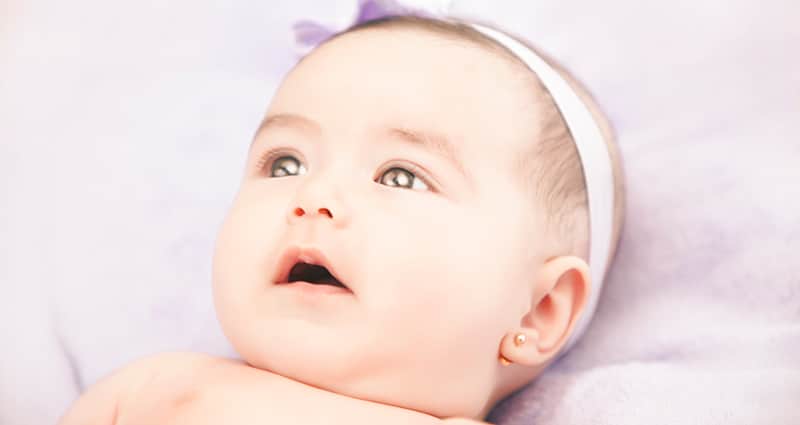When it comes to getting a child’s ears pierced, safety is the primary concern.
Parents’ opinions on this touchy topic are all over the place. The American Academy of Pediatrics (AAP) recommends waiting until your child is mature enough to take care of the piercing location by themselves.
However, the AAP notes that there’s little risk to the child if appropriate precautions are taken. No matter when you have a child’s ears pierced, consider the following three helpful tips.
Piercing Young Ears Safely
First, have the procedure done by a trained professional under sanitary conditions, using disposable gloves and sterilized tools.
Some pediatrician’s offices will do it for you. That option can be safer than having it done at an ear piercing pagoda at your local shopping mall, where employees might use a piercing tool, which can’t be sterilized the way a needle can.
A reputable establishment will also provide instructions for follow-up care at home.
Make Sure to Follow Up
Speaking of follow-up care, make sure you’re following the aftercare cleaning procedures for the recommended duration.
To reduce the risk of infection, you should apply rubbing alcohol or antibiotic ointment to the piercing location three times a day for at least a few days.
Also, you should leave your child’s earrings in for four to six weeks, but gently rotate them every day.
Picking the Right Size
Be sure to choose the right kind of earring for your child.
Your child’s first earrings should be relatively small and flat. Avoid dangling earrings, which could get caught on something and tear an earlobe.
If your child’s first earrings are made out of cheap material, they could cause a rash—especially the earring’s post, the part that goes through the earlobe.
It’s best to make sure the posts and any other parts of the earring that touch your child’s ears are made of 14-karat gold, to reduce the risk of inflammation, according to the American Academy of Family Physicians.
And if you’re piercing a child’s ears when they’re really young, you should know that earring parts could present a choking hazard. A baby’s earrings should screw on or lock securely.
If the worst happens and an infection sets in, call your pediatrician—if the earlobe gets red and swollen, and especially if your child starts running a fever.
We use the Blomdahl System which allows for a good selection of earrings and a very quick and clean placement.




